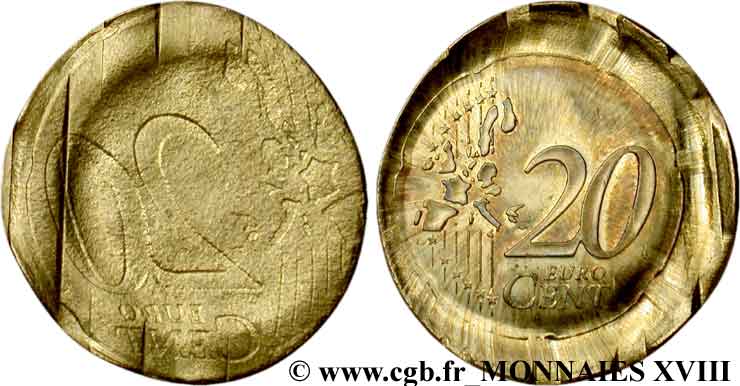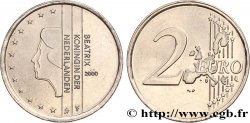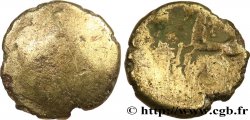v18_2423 - EUROPEAN CENTRAL BANK 20 centimes d’euro, frappe fautée et incuse n.d.
MONNAIES 18 (2003)
起拍价 : 100.00 €
估价 : 500.00 €
竞价记录 : 405.00 €
出价数量 : 8
最高出价 : 516.00 €
起拍价 : 100.00 €
估价 : 500.00 €
竞价记录 : 405.00 €
出价数量 : 8
最高出价 : 516.00 €
种类 20 centimes d’euro, frappe fautée et incuse
日期: n.d.
材质 copper-aluminium
直径 22,25 mm
重量 5,74 g.
侧面 lisse
稀少度 UNIQUE
关于品相的说明
Avec son brillant d’origine
出版目录中的项代码 :
正面
背面
背面的文字 20/ EURO/ CENT.
背面的说明书 Carte de l’Union européenne sur six traits tirés entre deux groupes de six étoiles formant les douze pays de la zone euro, signature en monogramme LL.
评论
Un exemplaire étonnant qui présente un flan de 20 centimes d’euro écrasé avec revers incus. Il s’agit apparemment d’un problème mécanique qui a imprimé la face commune avec la même face, incuse, au revers. Un flan est probablement resté collé dans la presse et un deuxième flan, celui-ci, a été introduit et est devenu une erreur de frappe. Ce qui est plus curieux est que l’on constate que le flan utilisé avait été “gaufré”, opération préalable à la refonte, puis refrappé avec un coin “face européenne”, apparemment sans avoir retiré la pièce restée coincée. On ne comprend pas comment la machine a pu “fournir” un flan “gaufré” à la presse monétaire. Très certainement unique.
A stunning example featuring a crushed 20 euro cents planchet with an incuse reverse. This appears to be a mechanical issue that resulted in the common side being printed with the same incuse side on the reverse. One planchet likely stuck in the press, and a second planchet, this one, was introduced and became a typing error. More curiously, the planchet used was found to have been “embossed,” a prerequisite for recasting, and then restruck with a “European side” die, apparently without removing the stuck coin. It is unclear how the machine could have “supplied” an “embossed” planchet to the coin press. It is most likely unique.
A stunning example featuring a crushed 20 euro cents planchet with an incuse reverse. This appears to be a mechanical issue that resulted in the common side being printed with the same incuse side on the reverse. One planchet likely stuck in the press, and a second planchet, this one, was introduced and became a typing error. More curiously, the planchet used was found to have been “embossed,” a prerequisite for recasting, and then restruck with a “European side” die, apparently without removing the stuck coin. It is unclear how the machine could have “supplied” an “embossed” planchet to the coin press. It is most likely unique.








 对产品描述纠错
对产品描述纠错 打印
打印 分享我的选择
分享我的选择 提问
提问 Consign / sell
Consign / sell
 产品介绍
产品介绍










